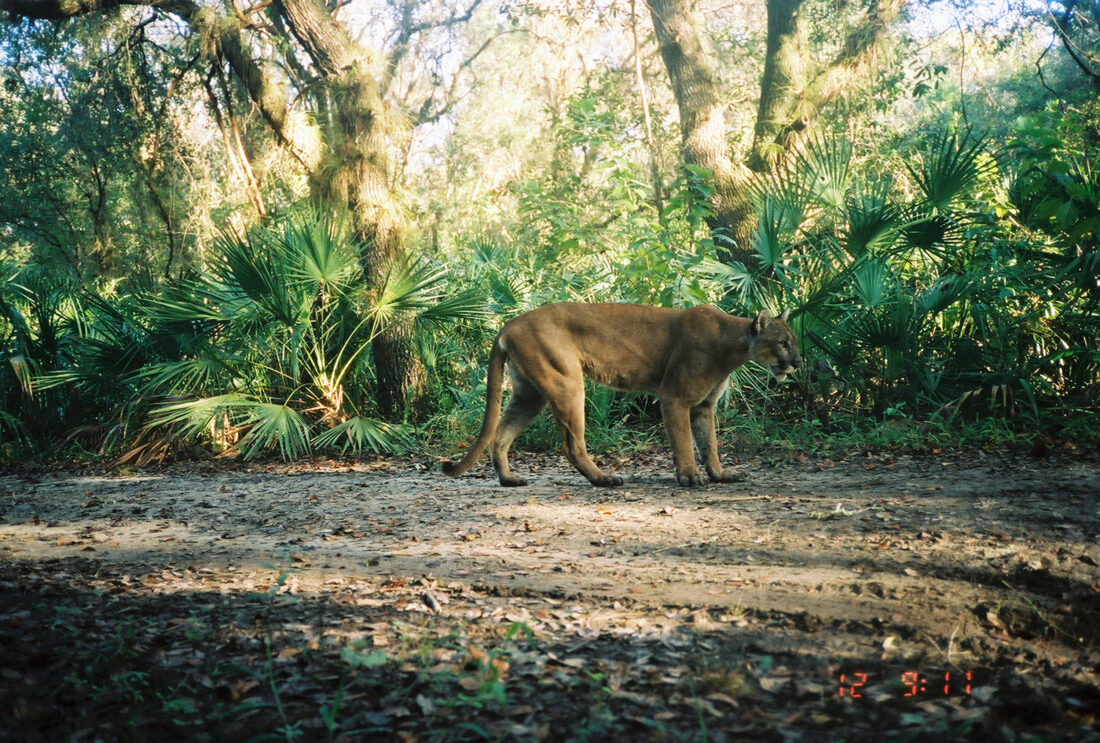Historically, Florida panthers, a subspecies of the mountain lion, roamed woodlands and swamps all over the Southeast. But after centuries of habitat loss and degradation that began with the arrival of European settlers—as well as persecution from humans—the Sunshine State now hosts the only known breeding population of mountain lions in the country east of the Mississippi River. Still, Florida panthers have become a conservation success story, and in time for Save the Florida Panther Day on March 16, they are about to get another leg up from a new $1.5 million grant from the National Fish and Wildlife Foundation that aims to expand their habitat beyond Southwest Florida.
Following years of sponsoring hunts to kill the big cats, the federal government finally outlawed killing them in 1958, and the panthers gained additional protection under the Endangered Species Act in 1967—even though no one was positive at that point that any still existed. But six years later, tracker Roy McBride spotted a female at Fisheating Creek, near Lake Okeechobee. Population estimates afterward hit as low as twenty cats, and in the 1990s, biologists undertook a last-ditch scramble to save the species by introducing eight Texas cougars to breed with the remaining panthers. Those efforts worked, and the biologists then caught and removed the Texas cougars in order to preserve the Florida panther genetics. Since, the population has slowly crawled upward.
Today, between 120 and 230 panthers roam Florida, and while that number is far greater than in decades past, it still makes them one of the rarest mammals in the country. “Their range is now only about 5 percent of what it used to be historically,” says Tindl Rainey, the director of conservation at the Fish & Wildlife Foundation of Florida, the organization that received the grant along with the Florida Fish and Wildlife Conservation Commission. As a wide-ranging species, Florida panthers require vast tracts of unspoiled habitat; on average, a single male panther can rove a two-hundred-square-mile territory. Though the Florida Wildlife Corridor—which continues to gain ground and knit together green space statewide—is key for the survival of the species, so is another group.
“Over half of Florida’s land area is in private ownership,” Rainey points out. “So clearly, private landowners are going to play a critical role in wildlife and habitat conservation.” In this case, by helping biologists achieve their aim of expanding the single breeding population northward. “The hope is that they’ll establish a second breeding population north of the Caloosahatchee River,” Rainey explains.
To that end, a three-year pilot program is launching this spring to financially incentivize private landowners like ranchers to make their large tracts of land friendly to panthers. Participants must meet certain criteria: They need at least five hundred acres of potential habitat, with both native forests and open areas, and only 25 percent (or less) nonnative plants. “It’s all about creating big, connected areas that are enticing to the panthers,” Rainey says, “and then working with biologists to maintain that habitat.” Famously, a female panther with a kitten was photographed north of the river in 2018 (she’s now immortalized on a Florida license plate), and biologists have documented four more females in the area since—evidence of how important it is to have habitat up to snuff and waiting.
If landowners express interest in participating, and the pilot goes well over the next three years, there’s potential to expand the program further. And public opinion toward panthers is now a far cry from the days when bringing in a pelt won the hunter five dollars. The Florida panther has been the state mammal since 1982, and it’s a symbol of the battle to protect what remains of Florida’s wild heart, on both public and private lands. “It’s so exciting to see ranchers and landowners at the table and working hand-in-hand with conservation organizations on projects like this,” Rainey says. “The Florida panther is such a beautiful, iconic species that everyone can get behind. It’s a gift to see them in the wild.”








